Recently I had the pleasure of watching Chocolate Country, a inspiring and beautifully shot documentary which gives us a glimpse into the world of poor, yet hardworking cacao farmers deep in the hills of the Dominican Republic. This is their story of why they joined together to form a cooperative to build a better future for themselves, their families and their community. This short film was created by Robin Blotnick, the son of two Peace Corps members who volunteered to assist this cooperative from 2003-05.
Although I enjoyed the film thoroughly with its vibrant images and descriptions of cacao harvesting, not to mention the stimulating soundtrack of local folk music. I am most touched by the people and their spirit, their pride and their determination. The farmers are so enthusiastic about how far they have come, regardless of how hard they work and how much they lack within their community. I am impressed by their work ethic and communal efforts and am humbled by their willingness to share their lives and their struggles with the world. Their hopes beyond food and running water are to provide basic education and health care to their families and community. Their dream, a road. It is they, who compelled me to take interest in their story, to research it further and to share it with you.
Our journey begins in the highlands of the Dominican Republic, surrounding the Loma Guaconejo Scientific Rainforest Reserve. Here, remote villages of family owned and operated farms have been growing organic cacao for generations. These same farmers are some of the poorest people in this country, mainly due to small scale farming which leads to low production. Their lack of access to new technologies and financial resources leaves them no choice but to sell poor quality beans, for an extremely low price, if they even can.
In 2001 the going rate for 50 kilo of cacao beans was about 400 pesos, this is equal to about 25 US dollars for 110 pounds. The farmers were selling unfermented beans to local community members who store the them, often in unfit environments and sell them to domestic buyers for a few hundred pesos in profit. Unfortunately many of the isolated farms were unable to sell their beans because there was no way to transport them to these centralized areas.
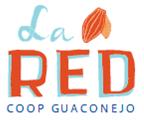 By 2003 the price of cacao had dropped even lower and in an effort to bring their community out of an economic crisis the farmers joined together to form “The Red” meaning network. The purpose of this group was to organize production and cut out the middle man, to work together in search of a domestic buyer to bring more sales to these rural and poorest areas. La Red was motivation for the farmers to concentrate on harvesting higher quality cacao and to incorporate the proper fermentation and drying facilities to do so. They were granted aide and volunteers from organizations like the Peace Corps, UNDP and USAID who also helped them to make connections with foreign buyers and start learning about the importance of organic farming and its benefits.
By 2003 the price of cacao had dropped even lower and in an effort to bring their community out of an economic crisis the farmers joined together to form “The Red” meaning network. The purpose of this group was to organize production and cut out the middle man, to work together in search of a domestic buyer to bring more sales to these rural and poorest areas. La Red was motivation for the farmers to concentrate on harvesting higher quality cacao and to incorporate the proper fermentation and drying facilities to do so. They were granted aide and volunteers from organizations like the Peace Corps, UNDP and USAID who also helped them to make connections with foreign buyers and start learning about the importance of organic farming and its benefits.
In 2005 they legally formed La Cooperativa Red Guaconejo and with their growth and positive impact on their community they were able to build an aqueduct for one of it’s villages highlighted in Chocolate Country, so that all 23 houses within that village now have running water.
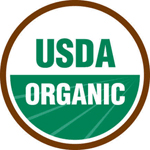 By 2006 they received organic certification, paid for by one of the domestic buyers and with it the price for 50 kilo had risen to around 1350 pesos. In the Fall of that same year a group of farmers, sponsored by USAID were sent to a conference in Baltimore were they met with people from Taza Chocolate and Dagoba about direct selling to their companies, cutting out yet another middle man, the buyer. Of course this did not make the buyers happy, which posed a threat to the cooperative because the buyers are large companies that have secure contracts and government connections to expedite export, not to mention they control a majority of the local industries cash flow.
By 2006 they received organic certification, paid for by one of the domestic buyers and with it the price for 50 kilo had risen to around 1350 pesos. In the Fall of that same year a group of farmers, sponsored by USAID were sent to a conference in Baltimore were they met with people from Taza Chocolate and Dagoba about direct selling to their companies, cutting out yet another middle man, the buyer. Of course this did not make the buyers happy, which posed a threat to the cooperative because the buyers are large companies that have secure contracts and government connections to expedite export, not to mention they control a majority of the local industries cash flow.
In 2007 Taza and La Red formed a direct partnership and Taza gave them a low interest loan, in which they were able to pay back in the form of cacao beans. (Cocoa beans were used as a form of currency dating back to the Aztec empire!) This loan helped them to pay off some of their local debts and focus on efficient production. In 2008 the local price for 50 kilo had risen to nearly 2350 pesos and with the co-op’s Taza partnership, it was worth more. Today, according to the standards of Taza’s Direct Trade Program the price is clearly stated at 500 US dollars above the NYBOT price for cacao, which is 300 US dollars more than the Fair Trade premium for certified organic cacao. 2011’s current price equals to about 6300 pesos for 50 kilo!
Wow, what a long way they have come! Now it is clear why the farmers have worked so hard to improve the quality of their cacao. Through incorporating the fermentation process, taking care in their drying methods and highlighting organic practices they have gained organic certification. With this, the co-op is able to sell to foreign markets for a higher price and direct trade ensures that they see all of their profits, which are redistributed throughout the community to better their way of life.
Ironically enough, last week as I am watching Chocolate Country and researching La Red, I discovered that in celebration of this achievement, the farmers were actually at Taza in Somerville, MA touring the factory and having a meet and greet with it’s customers. How cool is that!? I also learned that Dominican Republic is now one of the top exporters of organic cacao.
This film reminded me to open my eyes, to the everyday struggles that are associated with chocolate beyond my kitchen. To appreciate my life and to especially appreciate theirs and all of the hard work and dedication they put into a sustainable and superior product. It also teaches a valuable lesson about the importance of working together and how if we do, we really can make a difference. A special thanks to Taza and all that they have done, I am eager to try some of their stone ground chocolate bars and support their company. You should too!

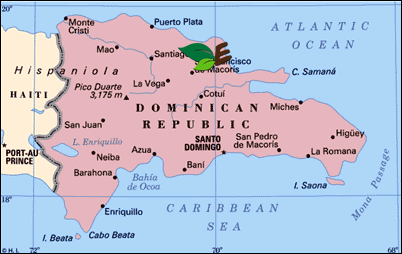
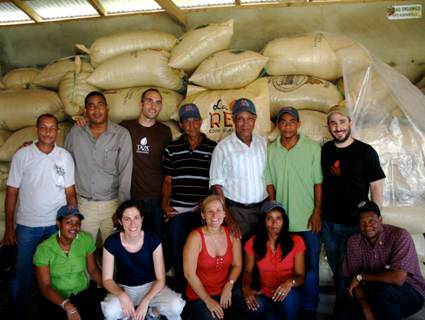
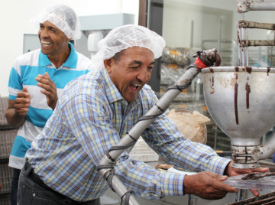
Any chance you will ever make Fair Trade Chocolate Chips?
Two things I just heard about recently that I am yet to try, but will soon. First one substituting cocoa nibs for chocolate chips. The other is using the couverture chips in place of regular chips, I’m not sure how bad they would melt in the oven so I need to try it out.
Wow! Such a wealth of information here. It’s great to see socially responsible companies giving back to the farms and the communities like this. Really well written, and well researched article!
Clarification on Fairtrade pricing. Organic FT is $300 above FT floor price and there’s a social premium of $200 as well (for organic or non). This would make Taza’s $500 above NYBOT on par with Fairtrade pricing since the Fairtrade floor rises to the market price, if the market price is higher than the Fairtrade minimum floor, and organic premium + social premium = $500 above that. Fairtrade and other standards also require audits for environmental and labor practices on farms, tracking and auditing of prices paid to the co-op and by a co-op to its members, and adherence to specific national and international labor, wage and environmental standards. Fairtrade is not just about a minimum price.
pricing data
http://www.fairtrade.net/fileadmin/user_upload/content/2009/standards/documents/2011-09-30_EN_Fairtrade_Minimum_Price_and_Premium_table.pdf
HI Steph, thanks for the clarification and info! I’m still learning about all of this and it’s a lot to take in all at once. I was unaware that FT floor rises to the market price, as it should. I do know that there are Fairtrade standards and requirements and that its not just about the price. I didn’t mean to understate those points, or leave them out. I wasn’t trying to focus on the fairtrade principles exactly but the work between the co-op and Taza and how by focusing on quality organic beans helped them achieve a higher market price.